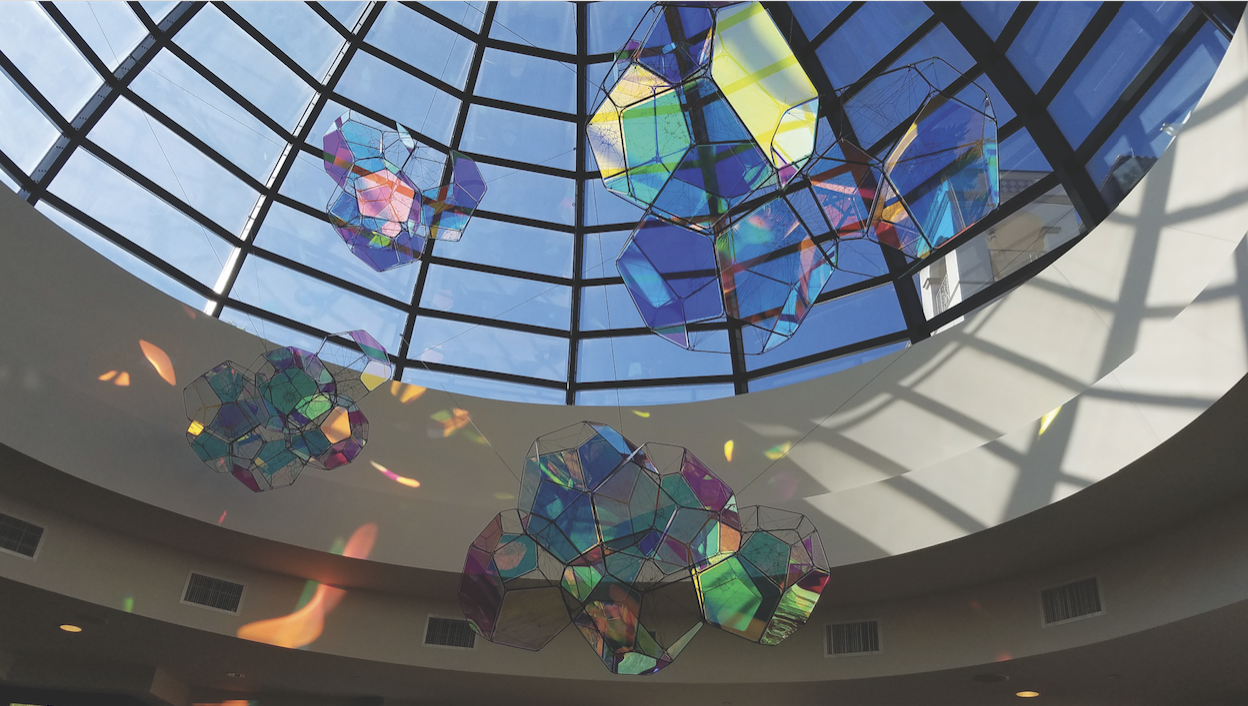The Cornell Fine Arts Museum is hosting the exhibit Time as Landscape until December 31, 2017. When you gaze into the depths of space, you gaze across eons of time. When looking across time, it is easy to become lost and distracted, realizing the smallness of humanity–and even the whole Earth—within the greater universe around us.
The universe is immense in scope spatially and temporally, but it is also true that we ascribed all those qualities by ourselves. Therefore, it is and must be our vocation to appreciate the beauty and fractal order of the universe from our experiences here in our cozy little observable corner. We matter, and it is our privilege to be able to witness and understand through science the universe as an experience rather than an object. That is the goal and purpose of Time as Landscape.
Time can be understood as both a quality of physics itself or as a personal experience, such as it “being time for class.” It can even be understood as something we either do or do not possess, like lacking time to complete deadlines. It is for this personal and impersonal nature of time that the exhibit is named for. Time is its own landscape, and in that landscape we live and create our experiences. The value of our time in existence, what we create, and the act of witnessing the nature of our existence are the themes upon which this exhibit is built.
The scale of the universe against incomparably smaller human experience is the key concept spectators of the exhibit should keep in mind. Rather than attempt to reconcile geologic or cosmologic time with human biological time, the exhibit uses these scales as a means of focusing our perspective.
The featured artists use the intersection of science and creativity as a means of generating their work. The exhibit showcases many debut pieces created specifically for the exhibit and its themes. Some art attempts to pull somewhere else into the museum. A piece that does this particularly well is Eos (Dawn, Troy, 10/27/02) by Spencer Finch. Finch transports the “rosy-fingered Dawn” light of Troy from myth to the museum, constructing a scientific path to the poetic. Another piece by Camille Henrot called Grosse Fatigue seeks to demonstrate the futile attempt of humanity to categorize the universe as well as draw a metaphor for the pursuit of information in the blackhole like “Information Age.” One of the most curious pieces, however, is by Tomás Saraceno. Sarceno set up a cubed space in which he set loose spiders (whom he credits,) who create their webs within the cube. The webs evoke an image of the spread of galaxies across the greater universe, owning to the fractal order that can be observed at both the macroscopic and microscopic scales.
This is an exhibit of big ideas that cannot be contained within the confines of the this article. The art in the exhibit seems to ask rhetorical questions, many of which are answered by the asker or other pieces. It is hard to over emphasize geologic time, let alone cosmologic time, when so many of us think of time through the context of our own lives, our biological time. This exhibit challenges the viewers to pause in one moment and look across many thousands of epochs. In a way, this exhibit asks viewers to become surveyors of the Landscape of Time.
However, this exhibit will only be here for the briefest of moments. While three months may seem like a long time right now, what is three months to your whole life? And for that matter, what is your whole life to human history? The history of the Earth? The cosmos? These questions are complex and may not have simple answers, but that is why the exhibit was formed, to help answer those questions using interdisciplinary techniques, reflective of Rollins College’s liberal arts philosophy. If you seek to know beyond your being, this is the exhibit for you.







Be First to Comment